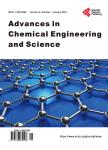Optimal Parameters for in Vitro Development of the Fungus Hydrocarbonoclastic Penicillium sp.
在真菌Hydrocarbonoclastic青霉的体外发育的最佳参数。作者机构:División Académica de Ingenieria y ArquitecturaUniversidad Juarez Autonoma de TabascoCunduacanMéxico Facultad de Salud y Ciencias A.F.Universidad SEKSantiagoChile
出 版 物:《Advances in Chemical Engineering and Science》 (化学工程与科学期刊(英文))
年 卷 期:2013年第3卷第4期
页 面:19-29页
学科分类:1002[医学-临床医学] 100214[医学-肿瘤学] 10[医学]
基 金:This research is part of the POA-2008011 project,“De-termining of the optimal parameters to produce Fungal and Bacterial hydrocarbonoclastic Biomass”developed by the Division Académica de Ingenieria y Arquitectura(DAIA)of the Universidad Juarez Autonoma de Tabasco(UJAT) It receives partial funding by the company Cor-porativo de Servicios Ambientales S.A.de C.V.(CORSA).The authors thank the DAIA/UJAT for all the support to carry out this research,to Ing.Alfredo Castro Betancourt,General Manager of CORSA S.A.de C.V.for all the procedures he went through to obtain finance for this project,to Mr.Alex Figueroa Munoz and Eva Flandes Aguilera,Dean of the Facultad de Salud y Cien-cias A.F.and academic vice-rector,respectively,of the Universidad SEK,for their support in the organization and conclusion of this document.
主 题:Hydrocarbon Degraders Optimal Growth Penicillium sp. Hydrocarbonoclastic
摘 要:México has extensive areas that have been impacted by oil spills for several decades. Current bioremediation technologies mostly used microorganisms to decontaminate sites with hydrocarbons. This research evaluated the conditions for the optimal development of the strain of a hydrocarbonoclastic fungus, which was found in samples of soil contaminated with 4.0 × 105 mg·kg-1 of Total Petroleum Hydrocarbons (TPH). A completely randomized experimental design with a 3 × 3 × 4 factor arrangement was used: three levels of temperature (T1 = 29℃, T2 = 35℃ and T3 = 40℃), three of pH (pH1 = 3.5, pH2 = 5.0 and pH3 = 6.0) and four nutrients (N1 = Urea, N2 = Triple-17, N3 = Nitrophoska-Blue and N4 = Pure-Salts). Total fungi were isolated from the sampled soil and were sown in a combined carbon medium for hydrocarbonoclastic fungi and a strain was selected to be adapted to a liquid mineral medium. The selected strain was classified as Penicillium sp. Analyses of variance and mean tests were performed, using the SPSS-11.0 statistical software. The microorganisms showed the highest population growth in the treatment N2pH2T1, which reached a value of 2.1 × 106 CFU·mL-1 in a biorreactor. To reach it, by bioaugmentation, the same development of Penicillium sp. in a conditioned soil would allow to implement a bioremediation strategy with great potential to retrieve soil contaminated with hydrocarbons both in Tabasco and in general in Mexico.



